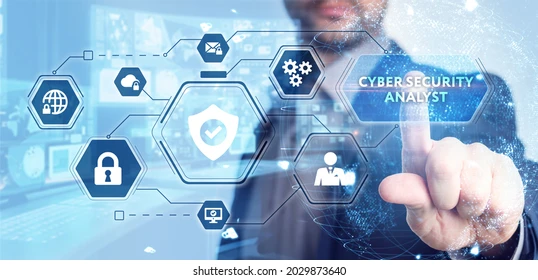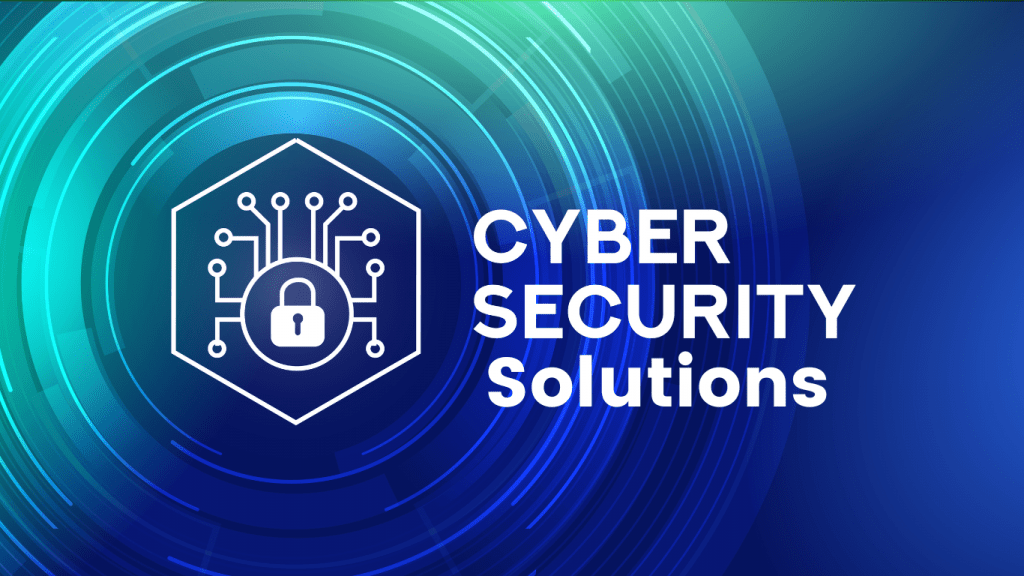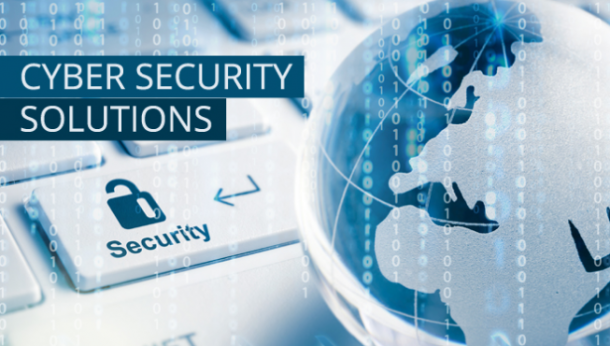Cybersecurity Solution
Cybersecurity is the protection of systems, networks, and data from digital attacks aimed at stealing, altering, or damaging sensitive information. It is essential in the digital age, as it encompasses a broad range of practices, from application and network security to disaster recovery and business continuity.

Understanding Cyber Threats
- Malware: Malicious software such as viruses, ransomware, and spyware that can damage or infiltrate systems.
- Phishing & Social Engineering: Fraudulent attempts to acquire sensitive information by disguising as a trustworthy entity, usually via email or messaging.
- Denial-of-Service (DoS/DDoS) Attacks: Overwhelm online services to make them unavailable, causing disruptions and potential financial losses
Key Principles of Cybersecurity
Confidentiality
Data is accessible only to authorized individuals (e.g., encryption, access controls).
Integrity
Ensures data isn’t altered or tampered with (e.g., hashing, digital signatures).
Availability
Systems and data are accessible to authorized users when needed.
Authentication & Authorization
Validating user identity and determining access rights.
Non-Repudiation
Guaranteeing a user or system cannot deny their actions.
Common Cybersecurity Solutions
- Firewalls & Antivirus Software: Block unauthorized access and detect malware.
- Encryption & Multi-Factor Authentication: Protect data by converting it into unreadable code and adding layers to the login process.
Encryption means data is scrambled so only authorized parties can read it.
Multi-Factor Authentication (MFA) requires multiple forms of identification (e.g., a password and a code sent to a phone). - Intrusion Detection/Prevention Systems (IDS/IPS) & SIEM: Monitor network traffic and logs to detect suspicious activities and respond to incidents.
SIEM (Security Information and Event Management) systems analyze security alerts and trends.
Main Features
Risk Assessment
Identify and evaluate risks to prioritize resources
Defense-in-Depth
Layer multiple security controls so failure of one does not compromise security
Security Policies
Formal guidelines on how to handle security (e.g., data handling, incident response)
Regular Audits/Updates
Frequent reviews, vulnerability scans, and testing to adapt to new threats
Threat Detection and Response
- Continuous Monitoring: Use automated tools to detect threats and anomalies in real time.
- Incident Response Protocols: Pre-defined steps for addressing breaches, from containing threats to recovery and post-incident analysis.
- Threat Intelligence: Gathering data on emerging threats and attacker methods to anticipate attacks.
Data Protection and Privacy
Data Classification & Encryption
Categorize data based on its sensitivity and protect it with encryption both “at rest” (stored) and “in transit” (moving)
Access Controls & DLP (Data Loss Prevention)
Restrict user access to only what’s necessary; prevent sensitive data leaks
Regulatory Compliance
Follow laws like GDPR (EU data privacy), CCPA (California consumer protection), and HIPAA (health data), ensuring proper data handling and user consent
Employee Training and Awareness
- Regular Security Training: Teach staff to recognize threats and follow best security practices (e.g., strong passwords, cautious with suspicious emails)
- Best Practices: Promote secure online behaviors and encourage reporting of suspicious activity
- Culture of Security: Make cybersecurity everyone’s responsibility, not just IT’s
Future Trends in Cybersecurity
- AI & Machine Learning: Automate threat detection and response, identifying attacks that evade standard defenses
- Zero Trust Architecture: No automatic trust is given to users or devices inside or outside of the network; every access attempt is verified
- Securing IoT: As Internet of Things (IoT) devices increase, each becomes a new potential entry point for attackers
- Cloud Security: As organizations move to the cloud, securing virtual infrastructure and services has become crucial
Conclusion
Cybersecurity is a business imperative, not just an IT concern. A proactive, layered approach—combining technical solutions, policy, employee awareness, and ongoing adaptation to threats—is essential for effective protection.
Key Jargon Explained:
- Malware: Malicious software designed to harm or infiltrate systems.
- Phishing: Attempts to trick individuals into revealing confidential information.
- Encryption: Encoding data so only authorized people can read it.
- Multi-Factor Authentication (MFA): Requiring multiple proofs of identity.
- SIEM: Systems that collect and analyze security information and events.
- Zero Trust: Security model where no entity is trusted by default.
- IoT (Internet of Things): Everyday devices connected to the internet (e.g., smart thermostats).
- GDPR, CCPA, HIPAA: Major laws/regulations governing data privacy and protection.
Summary Table of Cybersecurity Concepts
A strong, adaptable, and multi-layered cybersecurity strategy is essential for protecting modern organizations from a rapidly evolving threat landscape
| Component | Purpose | Example Tools/Techniques |
|---|---|---|
| Malware Protection | Prevent and remove malicious software | Antivirus software, firewalls |
| Data Protection | Prevent unauthorized data access/leaks | Encryption, DLP, access controls |
| Threat Detection | Identify and respond to cyberattacks quickly | IDS/IPS, SIEM, AI/ML systems |
| User Authentication | Verify identities and permissions | Passwords, MFA, biometrics |
| Regulatory Compliance | Adhere to laws governing data privacy | GDPR, CCPA, HIPAA compliance processes |
| Employee Training | Reduce risk from human error | Security awareness programs, simulated phishing campaigns |
Ready to get started?
Contact us today, to learn more about our Cybersecurity Solutions, and how we can help take your business to the next level. Let us handle your IT, so you can focus on what matters cost – driving your business forward
Related Articles
In 2024, a finance officer at a multinational company in Hong Kong transferred the equivalent of approximately USD 25 million following...
ferbetech
•
28 July 2025
Challenges This hotel is a member of The Leading Hotels of the World, the most prestigious hotel chain operating in South...
ferbetech
•
28 July 2025
Privileged access has quietly become one of the most dangerous gaps in enterprise security. In modern IT environments, the accounts with...
ferbetech
•
28 July 2025
Introduction Cybersecurity threats are evolving at a breakneck pace, and businesses must stay ahead of the curve to protect their data...





